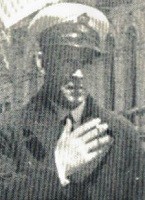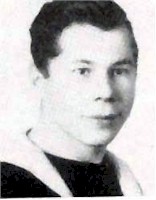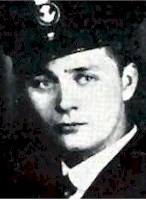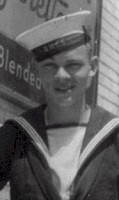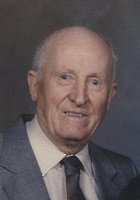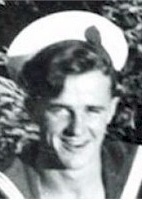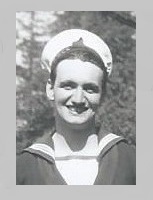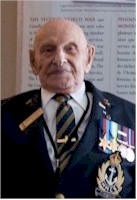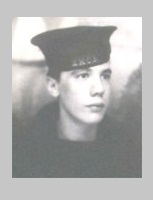|
HMCS CHEBOGUE K317
River Class Frigate
CHEBOGUE was commissioned at Esquimalt on 22 Feb 1944, and sailed for Halifax on 15 Mar 1944, arriving on 12 Apr 1944. After working up in Bermuda in May 1944 she returned to Canada and was assigned to EG C-1. After visiting Yarmouth, N.S., from 12-14 Jun 1944 she transited to St. John's. She left St. John's on 23 Jun 1944 for Britain as part of the escort of convoy HXF.296. On her second return trip, this time as Senior Officer's ship of EG C-1 escorting convoy ONS.33, she was torpedoed by U 1227 on 04 Oct 1944, 800 miles west of the British Isles. She had made some 900 miles under tow, successively, of HMCS CHAMBLY, HMS MOURNSEY, HMCS RIBBLE, and the ocean tug HMS Earner when a storm caused the tow to part.
Peter Davies recalls the rescue of the crew of HMCS CHEBOGUE by the Mumbles Volunteer Lifeboat Service, his father, Gilbert Davies, being a member of the crew - During the afternoon of 11th October a severe storm descended on the South Wales area causing serious damage to the ocean tug Earner and the CHEBOGUE under tow. This tow parted and reluctantly the tug made for the safer deeper water. Helplessly the stricken frigate at the mercy of the westerly storm, which by now had reached wind gusts in excess 70 mph, drifted across the Swansea Bay and grounded on the rocky sand of Port Talbot. The call for helped was eventually passed to Motor Mechanic Gilbert Davies early in the evening by Mr. Tom Kluge the Hon. Sec. Normally G. Davies would have fired the maroons but this was wartime, so the message was conveyed by telephone to Coxswain William Gammon and then by any means to the other volunteers, who hurried through the dreadful weather to collect at the lifeboat station. Unfortunately the war had depleted the area of almost all young men. When the coxswain chose his crew he found that there was no second mechanic and of the remaining crew of eight two brothers were 68 and 69 while they were supported by two cousins aged 73 and 74. It must be remembered in 1944 elderly men were not quite as active as their counterparts today. Yet despite these obstacles these eight gentlemen were about to put to sea to perform the impossible. The Mumbles Lifeboat, The Edward Prince of Wales, was a 45 foot Watson Class boat powered by a single 80hp engine. She was not sophisticated just a sailing lifeboat with an engine. There was no radio and only a small covering for the mechanic, which was partially open to the elements. At 7.45pm the boat set off on it's dauntless task. The Cherboque had struck by the stern with her bow swaying as it faced the sea. The night was pitch black with vary few lights on the ship. There was constant danger from hanging ropes and obstacles which could at any time foul the lifeboat's propeller. Evacuation from the seaward side was impossible leaving the only course available driving into the surf, around the stern and alongside for a few seconds while the crew jumped. The CHEBOGUE'S captain, LCdr. M.F. Oliver, RCNR, asked if the whole crew could be saved and was told "Yes, if they keep their heads". Twelve times the boat made the hazardous circuit, and each time three or four leapt to safety displaying incredible discipline as they took their turns. Each time a member of the lifeboat crew would move them to safer positions on the deck of the crowded vessel. All 42 crew who were aboard were rescued. The motor mechanic had to share his partially covered area with all the survivors, who took turns from the savage weather. The survivors were eventually landed at the lifeboat house with only one broken leg, one trenching for an officer, Lt Cdr Ian McPhee, who had been pulled to safety after dangerously falling in between ships, and a number of cuts and bruises. Conditions were so difficult that the lifeboat could not be re-housed and had to seek shelter on the Swansea river. Coxswain William Gammon was awarded the Gold medal. Motor Mechanic Gilbert Davies and Bowman Thomas Ace each received a Bronze medal. The other five members received the vellums of the RNLI for courage. The lifeboat was so badly damaged that it was taken with Mechanic Davies to the ship builders at Bideford Devon for extensive repairs which took nearly 4 months. Sadly on 23rd April 1947 The Edward Prince of Wales was lost with all hands during an attempted rescue, only a few miles from where the successful CHEBOGUE rescue took place. The crew included Coxswain William Gammon and Motor Mechanic Gilbert Davies.
The CHEBOGUE was re-floated the following day, taken to Port Talbot and placed in reserve. In Dec 1944 she was moved to Newport, Wales, to be made ready for a transatlantic crossing under tow, but instead was taken to Milford Haven and paid off on 25 Sep 1945. She was broken up locally in 1948.
Commanding Officers
LCdr Thomas MacDuff, RCNR - 22 Feb 1944 - 23 Jul 1944
A/LCdr Maurice Faulkman Oliver, RCNR - 24 Jul 1944 - 21 Jan 1945
Lt Donald Francis McElgunn, RCNR - 22 Jan 1945 - 25 Sep 1945
They shall not be forgotten
(t) - survived the torpedoing of HMCS CHEBOGUE on 04 Oct 1944
Former Crew Members
Photos and Documents
|
|||||||||||||||||||||||||||||||||||||||||||||||||||||||||||||



